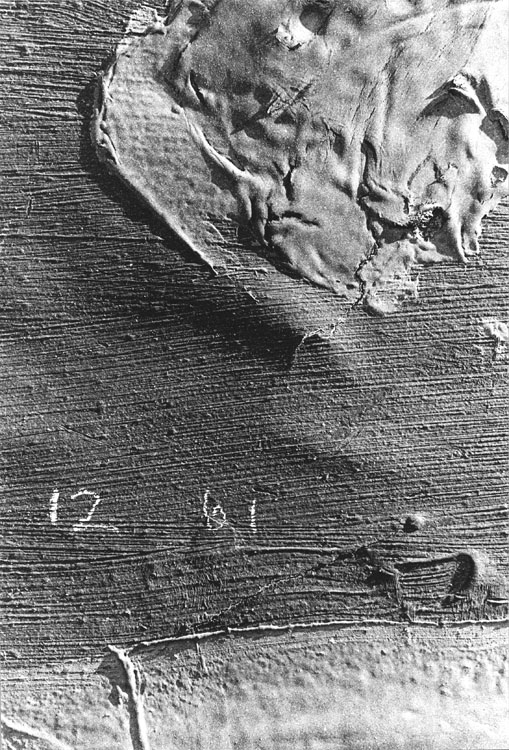Over The Top

One of the basic human needs is to have a roof overhead to protect from rain, sleet, snow, high winds and wildlife looking to nest.
In new construction, roofing structure (lumber) is installed, topped off with some all-important waterproof sealant . . . tiles, slate, shingles, asphalt, tin, iron, steel, tar (sometimes with embedded gravel), canvas, rubberized paint, palm leaves, even—back in the pioneering days of the American West—sod. Over time, a roof’s direct exposure to weathering (not to mention the gnawing of rodents and the drilling of woodpeckers), requires that its protective cover be periodically renewed or replaced.
Over the decades and centuries, new products for the purpose have regularly been invented. A research study into the subject could be well-illustrated with vintage printed ephemera . . . much of which is also a rich lode of primary source detail.
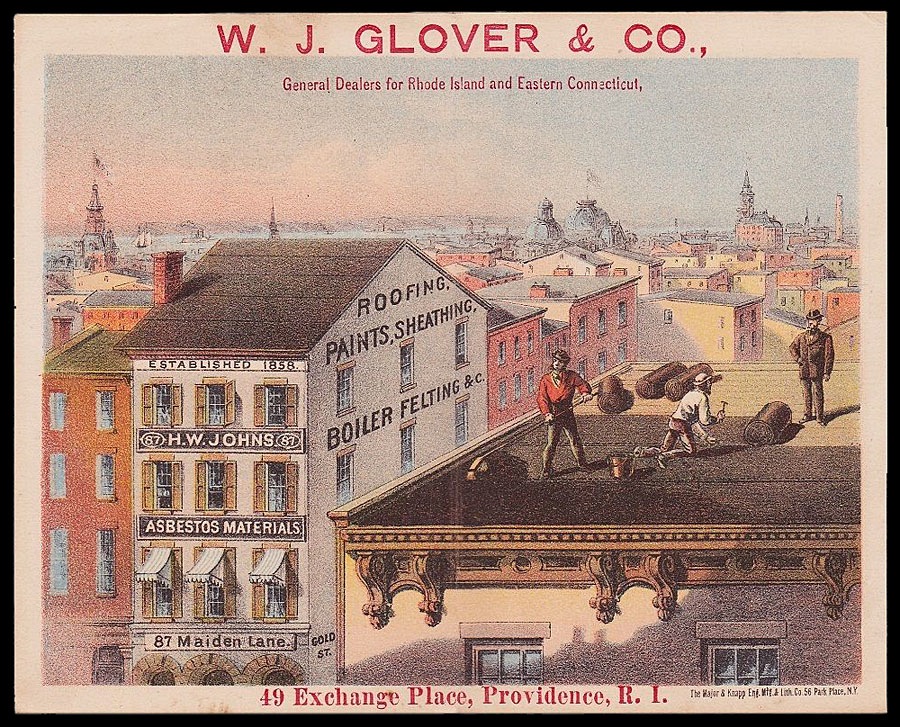
Flat roofs always present a problem, because water sits and pools rather than running quickly off as it does on angled roofs. The H. W. Johns Manufacturing Company (above), a dealer specializing in asbestos construction materials, combined in 1901 with the Manville Covering Company to form the H. W. Johns-Mansville Company.
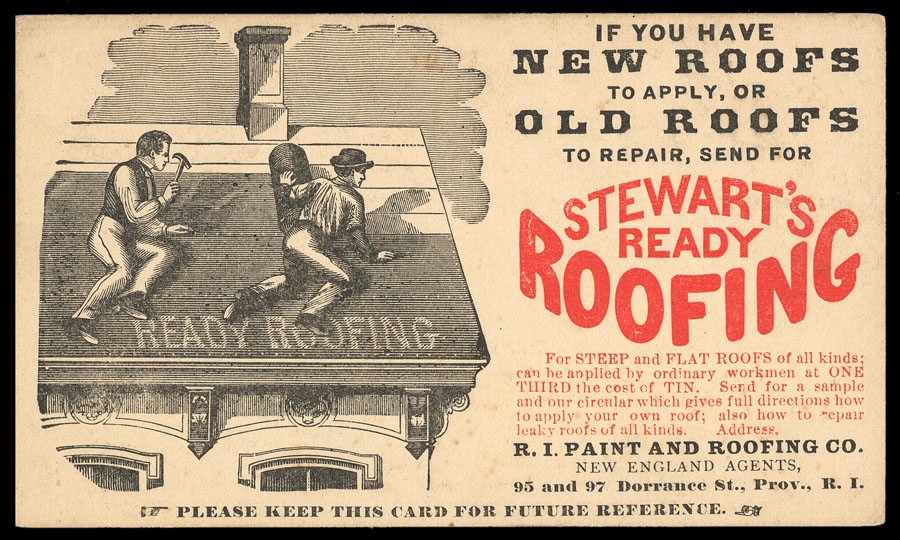
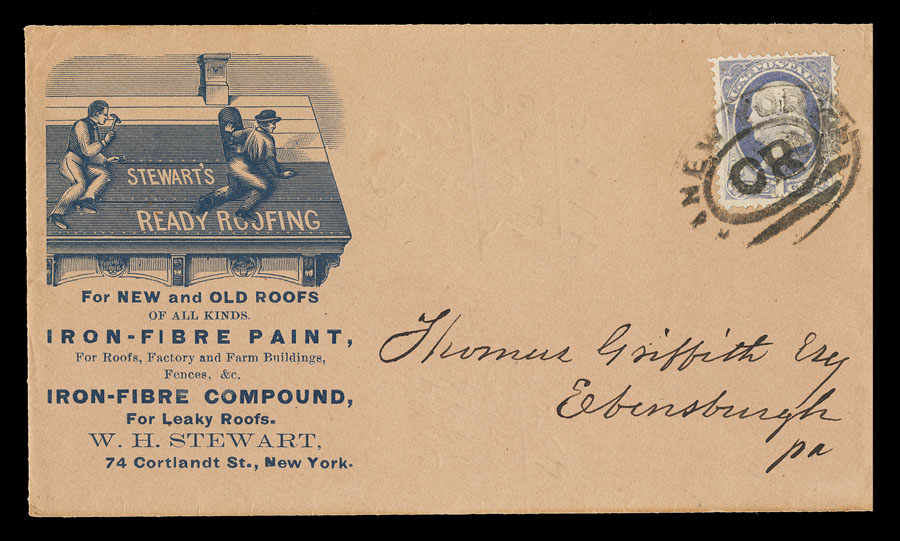
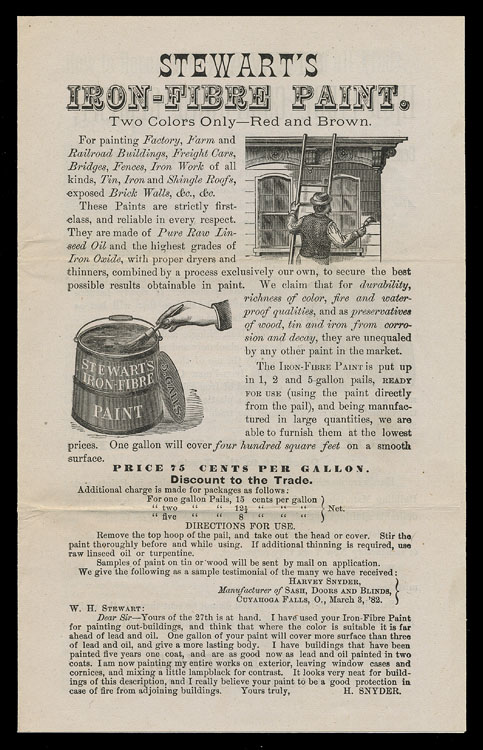
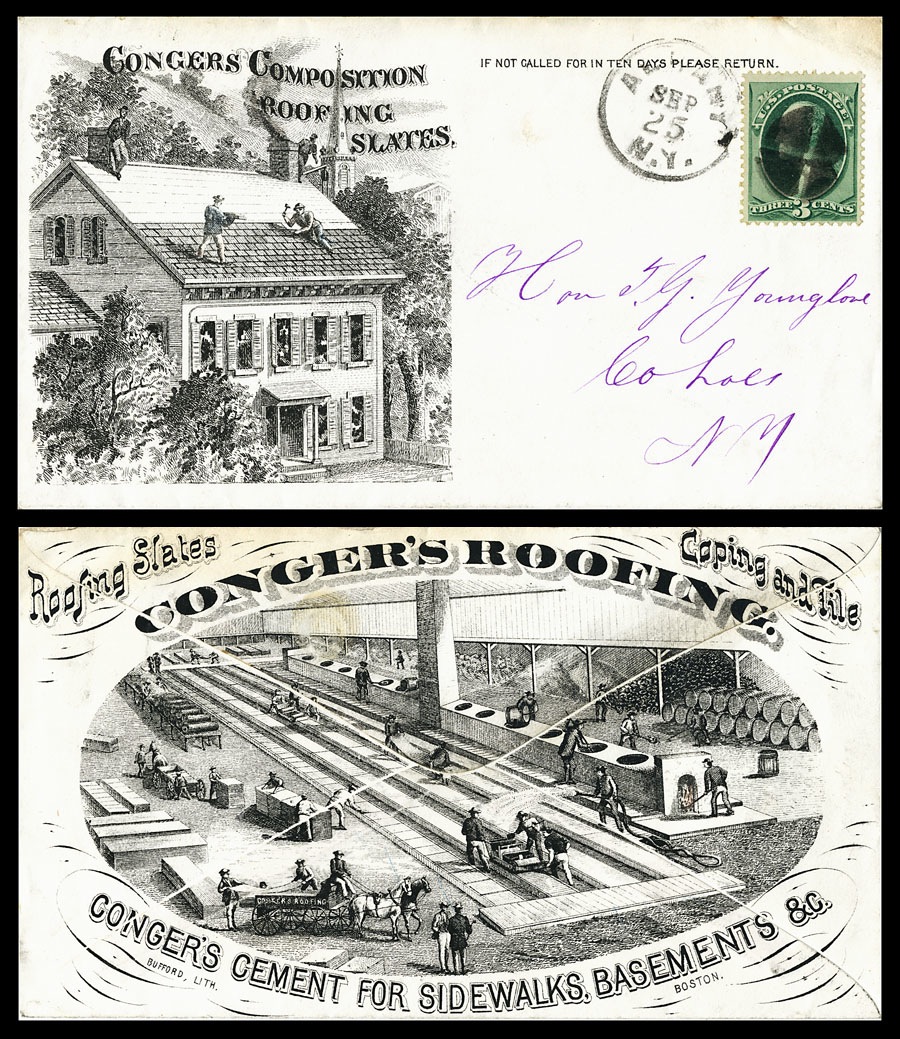
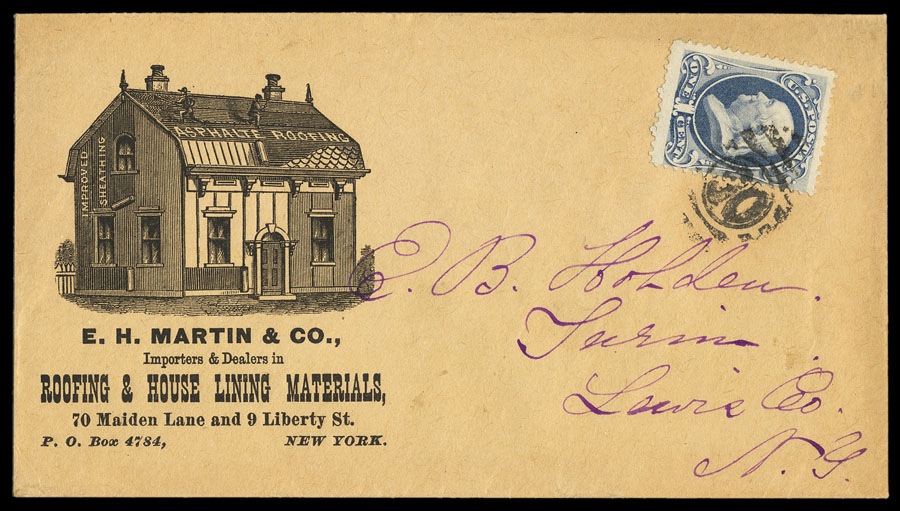
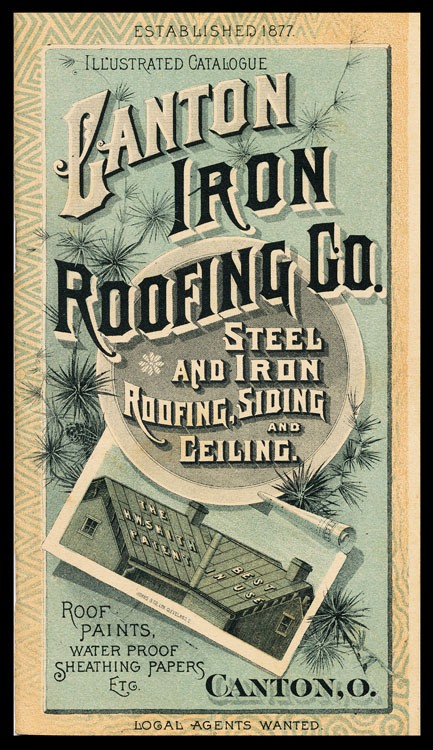
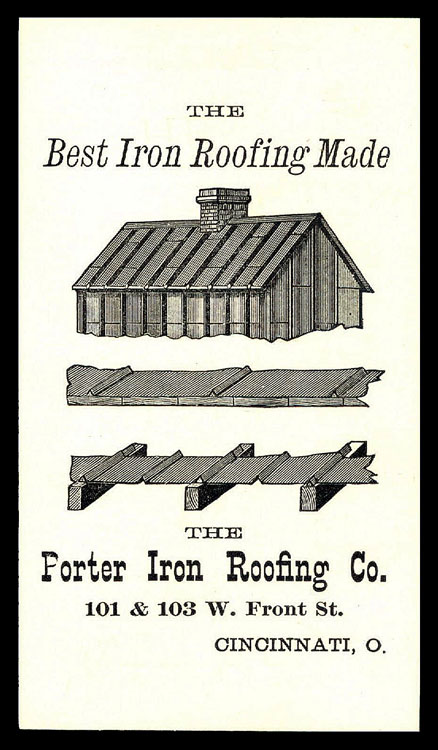
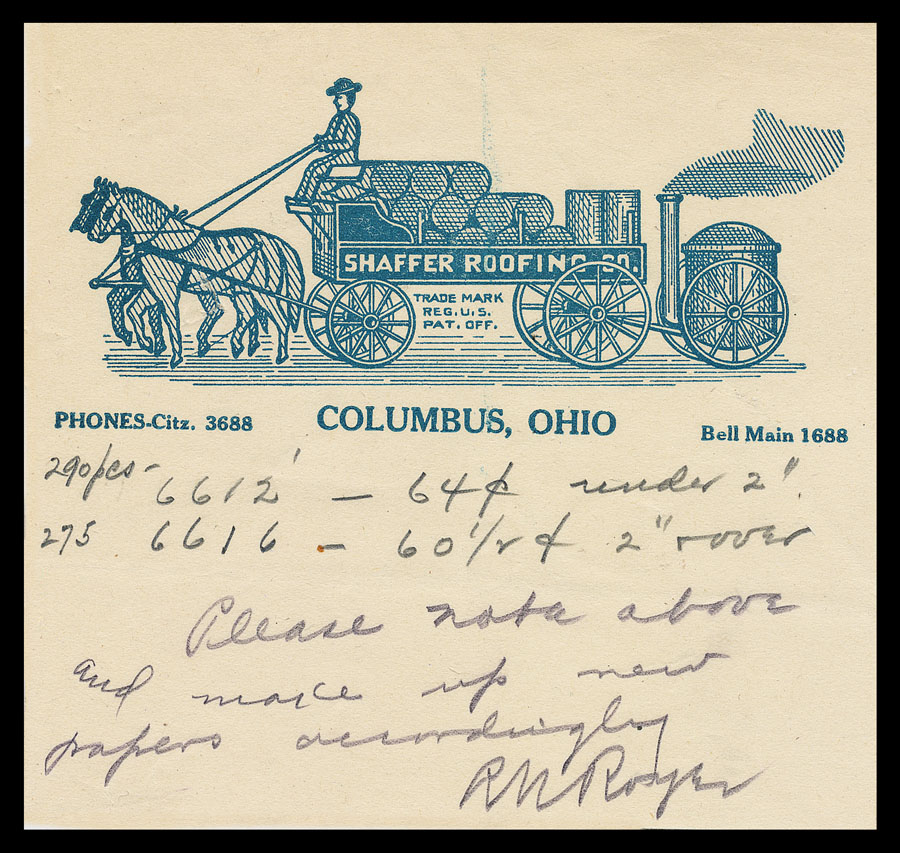
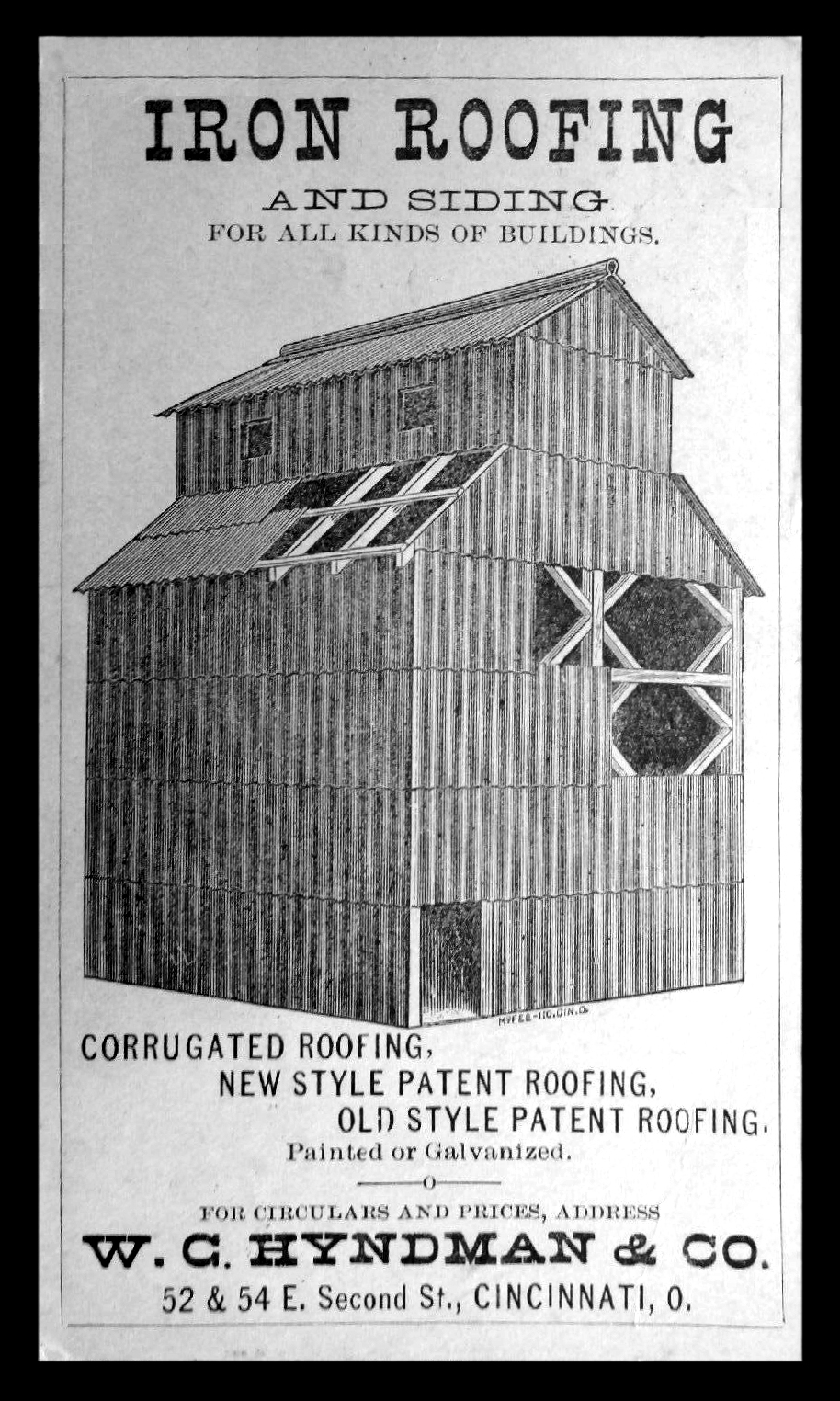
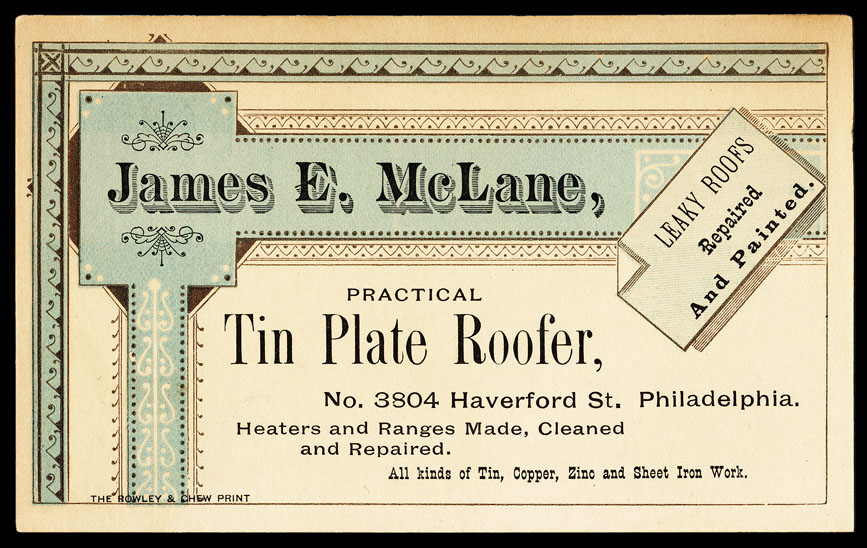
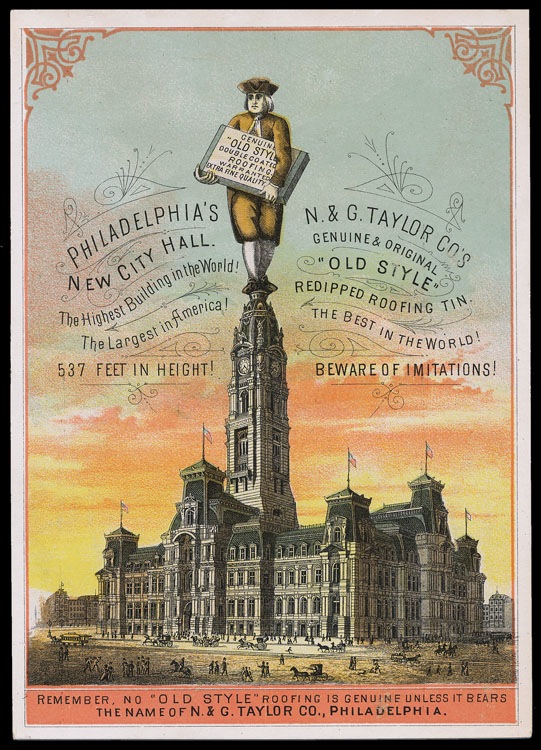
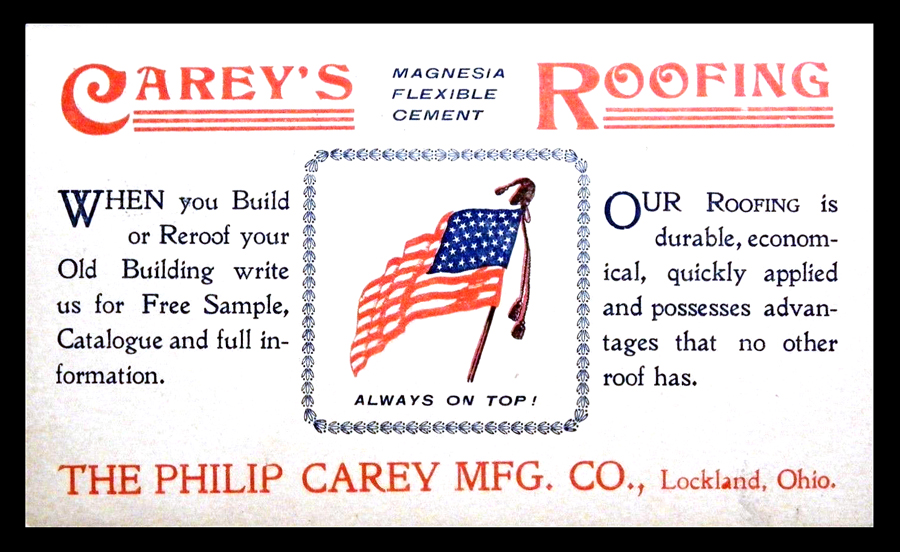
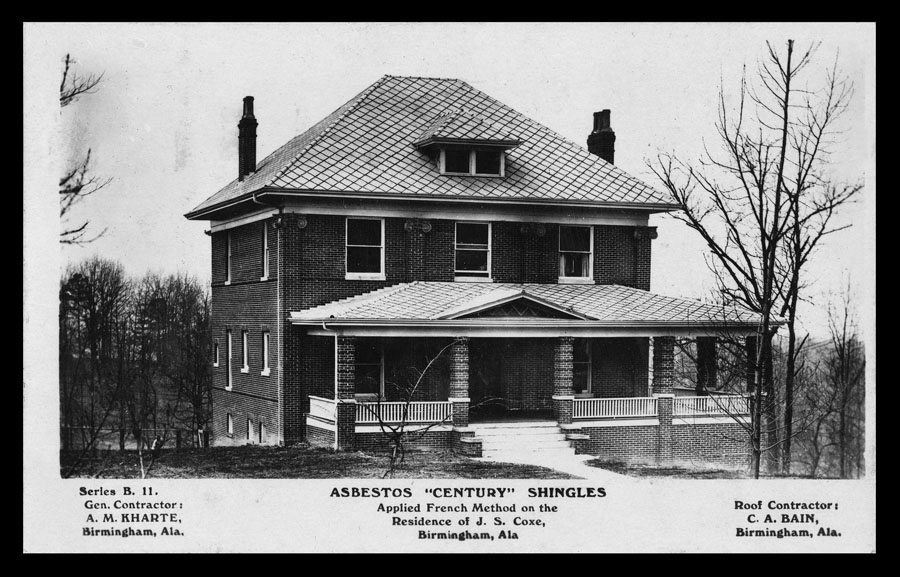
Back in the day, asbestos roofing shingles were widely used for roofing and for siding, long before its role in causing lung cancers had been realized. Even in this 21st century, it is not difficult to spot homes still sporting asbestos shingle siding, demonstrating just how long-lasting their protection can be. In many cases, they remain in place because they present little if any danger as they sit, but removal would inevitably disperse cancer-causing particles into the air.
Photography is generally considered to be one form of ephemera, and many photographs featuring roofs and roofing taken, and/or found by diligent collectors. . .
